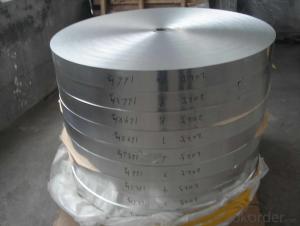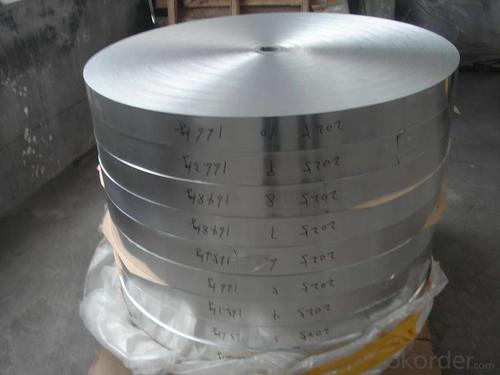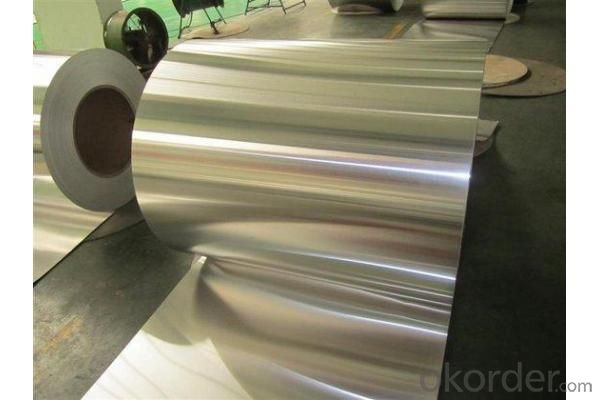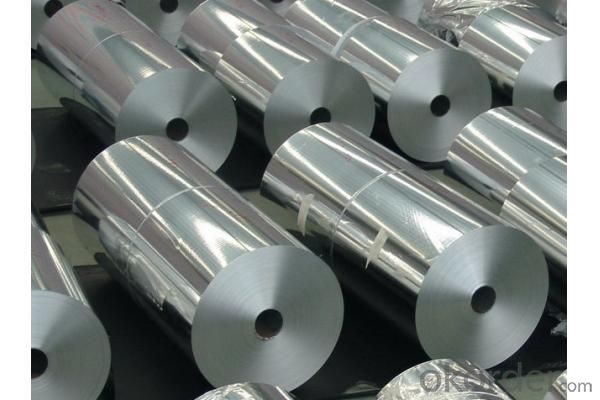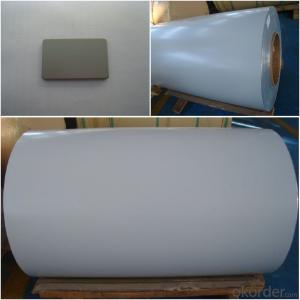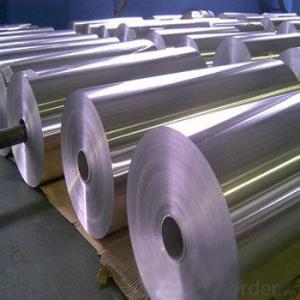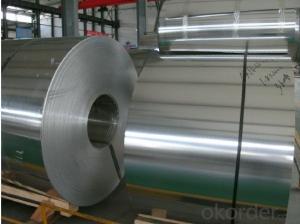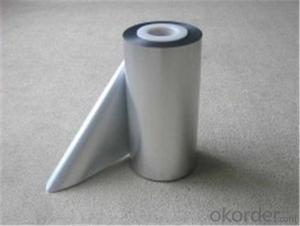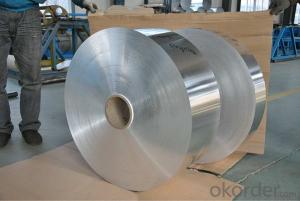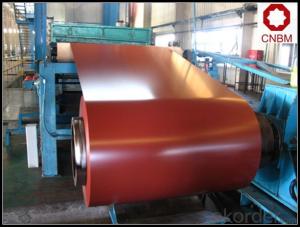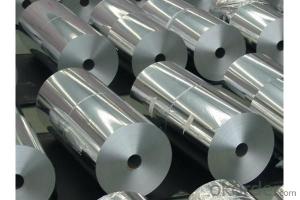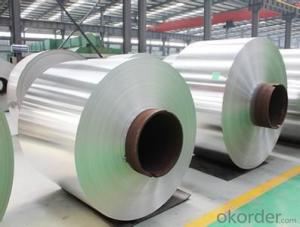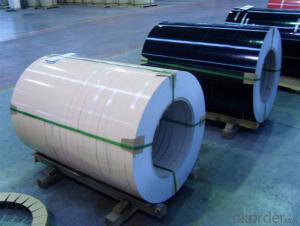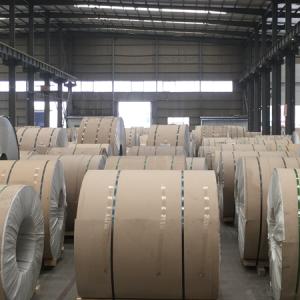Coil Aluminum Stock - Alloy Aluminum Coil 5005 5754 H32 H24 O for Building Material
- Loading Port:
- Tianjin
- Payment Terms:
- TT OR LC
- Min Order Qty:
- 100 m.t
- Supply Capability:
- 10000 m.t/month
OKorder Service Pledge
OKorder Financial Service
You Might Also Like
Specification
Specification:
Alloy | Temper |
1050 1060 1070 1100 | H112, H24, O |
2024 LY12 LY11 2A11 2A14 2017 2A17 | H112, T4, T351, T6 |
3A21 3003 3103 3004 3005 3105 | H112, H24, O |
5052 5754 5005 5083 5086 | H32, H112, H111, H24, O |
6063 6061 | H112, T6, T651, T5, T4,O |
Specification | 1.Thickness: 0.2-60mm 2.Width: 500-2000mm 3.Length:According to requirement 4.Temper: Various status Coils can be produced as your request. |
Application | Mainly used in construction, decoration, packaging, printing, covers material, signs,billboards, building exterior decoration, bus body, high-rise buildings and factories wall decoration |
Alloy Series | Typical Alloy |
1000 Series | 1050 1060 1070 1100 |
2000 Series | 2024(2A12), LY12, LY11, 2A11, 2A14(LD10), 2017, 2A17 |
3000 Series | 3A21, 3003, 3103, 3004, 3005, 3105 |
4000 Series | 4A03, 4A11, 4A13, 4A17, 4004, 4032, 4043, 4043A, 4047, 4047A |
5000 Series | 5052, 5083, 5754, 5005, 5086,5182 |
6000 Series | 6063, 6061, 6060, 6351, 6070, 6181, 6082, 6A02 |
7000 Series | 7075, 7A04, 7A09, 7A52, 7A05 |
Chemical Composition:
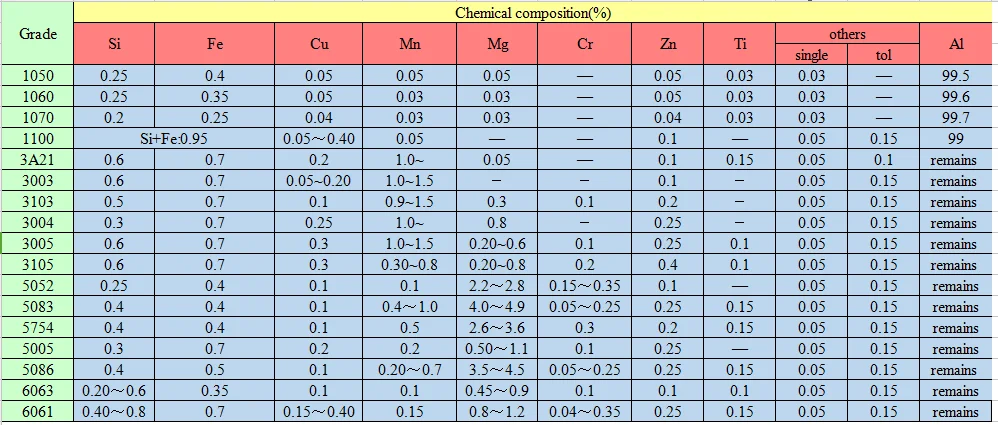
Packaging & Shipping
| Packaging Detail |
Coil is placed to the iron or wooden pallet ,rapped by water-proof kraft paper perfectly , then strong fixed by GI iron narrow belt .( About 2.5 ton / pallet ) |
| Dimension | 20 CM x 1220MM X 2440MM |
| Container | 20FT Container can load 25 tons max ; 40FT Container can load 27 tons max ; |
| Shipping | By Sea 20ft/40ft Container |
Our services
Main Services:
> Precision aluminum plate
> Casting products
> Forging products
Special Services:
> Alloy selection
> Aluminum machining techniques
> Hot working
> Surface treatment
Our Promise
---High quality stainless steel with reasonable price.
---Wide excellent experiences with after-sale service.
---Every process will be checked by responsible QC.
---Professional packing teams which keep every packing safely.
---Trial order can be done in one week.
---Samples can be provided as your requirements.
FAQ
Q: Do you have the CE, TUV, UL Certification?
A: We’ve already passed all the tests, and any certificate is available.
Q: Have you ever sold your products to companies in my country?
A: Of course, we have customers in all general PV markets, but I think we should expand our market share along with the market growth.
Q: How do you pack your products?
A: We have rich experience on how to pack to make sure the safety on shipment when it arrives at the destination.
Q: Can you do OEM for us?
A: Yes, we can.
Q: Can we visit your factory?
A: Surely, I will arrange the trip basing on your business schedule.
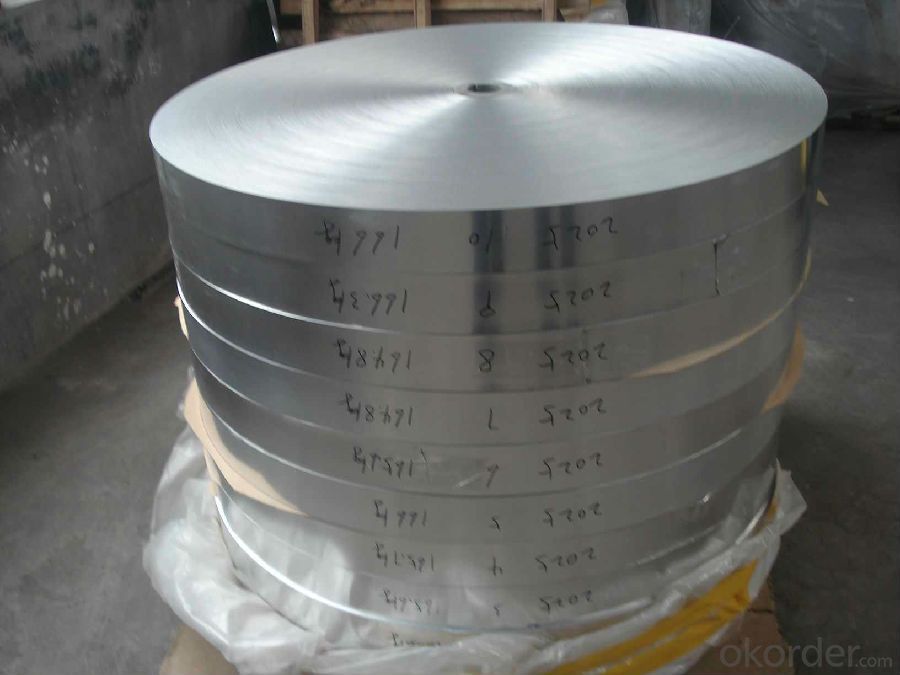
- Q: What is the typical heat transfer coefficient for aluminum coils?
- The heat transfer coefficient for aluminum coils can vary depending on several factors, including the application, coil geometry, and surrounding conditions. Generally, aluminum has high thermal conductivity, which enables efficient heat conduction. In forced convection applications, where heat is transferred using a fluid like air or water, the heat transfer coefficient for aluminum coils can range from 10 to 100 W/m^2K. This range is influenced by factors such as flow rate, velocity, and temperature difference between the coil and the fluid. In natural convection scenarios, where heat transfer occurs due to the buoyancy-driven flow of air, the heat transfer coefficient for aluminum coils is typically lower, ranging from 5 to 25 W/m^2K. This is because the movement of air is slower and the heat transfer effectiveness is reduced compared to forced convection. It's important to note that these values are general guidelines and can vary significantly depending on specific design considerations, material properties, and operating conditions. Therefore, it is recommended to consult specific heat transfer data or conduct detailed experiments or simulations to determine the precise heat transfer coefficient for a given aluminum coil application.
- Q: What are the potential applications of stucco-embossed aluminum coils?
- Stucco-embossed aluminum coils have various potential applications due to their unique texture and durability. They are commonly used in construction projects for wall cladding, roofing, and insulation purposes. Additionally, these coils can be utilized in the manufacturing of appliances, automotive parts, and even decorative items. The stucco pattern not only enhances the aesthetic appeal but also provides a non-slip surface, making it suitable for flooring or ramps. Overall, the versatility of stucco-embossed aluminum coils makes them an ideal choice for a wide range of industries.
- Q: How to use aluminum sheet to roll a 12m-long aluminum coil with a diameter of 184cm?
- According to project experience, first you should check the specification of the aluminum sheet and then design crafts such as connection method, installation and transportation according to equipment.
- Q: This question asks about the various classifications of aluminum coil based on their properties and applications.
- <p>Aluminum coils are categorized into different grades based on their alloy composition and applications. The most common grades include 1000 series (99% pure aluminum), 3000 series (aluminum-manganese alloys), 5000 series (aluminum-magnesium alloys), and 6000 series (aluminum-magnesium-silicone alloys). Each grade has unique properties such as formability, strength, and corrosion resistance, which make them suitable for specific applications like construction, transportation, and packaging. The selection of the grade depends on the performance requirements of the end product.</p>
- Q: My budgies took at bath in an aluminum pie tin today. At first they bit it just because it was their first time. Should I be worried that they might get poisoned?
- Aluminum cookware/products that are in good condition aren't really a safety issue. That said, I'd be concerned about the birds chewing on the pie tin. Some of those tins can contain zinc which is very toxic to birds. I would suggest using something else just in case.
- Q: Are there any specific guidelines for the installation of aluminum coils?
- Specific guidelines exist for the installation of aluminum coils. When installing aluminum coils, it is crucial to adhere to the manufacturer's instructions and industry standards. Some guidelines to consider are: 1. Handling: Take caution when handling aluminum coils to prevent damage. It is recommended to use gloves and avoid dropping or dragging the coils during installation. 2. Compatibility: Confirm that the aluminum coils are suitable for the HVAC system being installed. Factors such as coil size, capacity, and refrigerant type should be taken into account. 3. Coil orientation: Pay attention to the proper orientation of the coil during installation, ensuring that the airflow direction aligns with the system's requirements. 4. Alignment: Proper alignment of the aluminum coil is essential for efficient operation. Ensure that the coil is level and securely attached to the mounting brackets. 5. Condensate drainage: Proper installation and functioning of condensate drain pans and lines are necessary to prevent water leakage and potential damage. 6. Electrical connections: Adhere to the manufacturer's electrical guidelines to ensure correct wiring and connections for the aluminum coil. 7. Insulation: Insulate refrigerant lines and ductwork as needed to prevent condensation and improve energy efficiency. 8. Clearances: Maintain sufficient clearances around the aluminum coil to facilitate proper airflow and service access. This includes allowing enough space for cleaning and maintenance. 9. Testing: After installation, perform necessary tests and inspections to verify the proper functioning of the aluminum coil. This may involve checking for refrigerant leaks, ensuring proper airflow, and testing system performance. Before installing aluminum coils, it is important to consult the manufacturer's installation instructions and any applicable building codes or regulations. Following these specific guidelines will contribute to a successful installation and optimal performance of the aluminum coils.
- Q: How are aluminum coils installed in various applications?
- Aluminum coils are installed in various applications using different methods depending on the specific requirements and the nature of the application. Here are a few common methods used for installing aluminum coils: 1. HVAC Systems: In heating, ventilation, and air conditioning (HVAC) systems, aluminum coils are commonly used for heat transfer. These coils are typically installed inside the air handling units or the condensing units. The installation process involves securing the coils in the designated space, connecting them to the refrigerant lines, and ensuring proper insulation and sealing to prevent any leaks. 2. Refrigeration: In refrigeration systems, aluminum coils are used to transfer heat and facilitate the cooling process. The coils are usually installed within the evaporator or condenser units. The installation process involves mounting the coils securely, connecting them to the refrigerant lines, and making sure that all components are properly insulated and sealed. 3. Heat Exchangers: Aluminum coils are widely employed in heat exchangers for various industrial applications. These coils are installed within the heat exchanger unit, which can be either a shell and tube design or a plate and frame configuration. The installation process involves positioning the coils within the exchanger, connecting them to the appropriate piping and fittings, and ensuring proper alignment and sealing. 4. Automotive Radiators: Aluminum coils are extensively used in automotive radiators for efficient heat dissipation. The installation process involves mounting the coils within the radiator assembly, connecting them to the coolant lines, and ensuring proper alignment and sealing to prevent any leakage. 5. Electrical Transformers: In electrical transformers, aluminum coils are utilized for efficient power transmission and electrical insulation. The installation process involves winding the aluminum coils around the transformer core, connecting them to the appropriate terminals, and ensuring proper insulation and grounding. In all these applications, it is crucial to follow industry standards and guidelines to ensure the proper installation of aluminum coils. This includes considering factors such as structural support, proper alignment, connection integrity, insulation, and sealing to achieve optimal performance and longevity.
- Q: Aluminum silicate felt fiber needle blanket noise reduction?
- Aluminum silicate needled blanket belongs to the porous material, porosity higher than ninety-six percent in noise reduction has an absolute advantage, because the aluminum silicate needled blanket belongs to soft products, the lack of stress in the industrial application, so there is no large-scale promotion, mainly used in the silencing device of heavy trucks, trucks and cars.
- Q: Can aluminum foil coil be stores for a long time?
- It is ok within one or two years, but for five or six years, it will be oxidized.
- Q: How do aluminum coils contribute to energy-efficient lighting systems?
- Aluminum coils are essential components in energy-efficient lighting systems due to their unique properties and functionalities. Firstly, aluminum is an excellent conductor of electricity, allowing for efficient energy flow within the lighting system. This property ensures that minimal energy is lost during transmission, maximizing the overall energy efficiency of the system. Moreover, aluminum coils are lightweight and durable, making them ideal for use in lighting systems. The lightweight nature of aluminum allows for easier installation and handling, reducing the overall energy required during the manufacturing and installation processes. Additionally, aluminum's durability ensures that the coils can withstand the rigors of daily use without compromising performance, further contributing to the longevity and efficiency of the lighting system. Furthermore, aluminum has excellent thermal conductivity, allowing for efficient heat dissipation. Heat management is crucial in lighting systems as excessive heat can reduce the lifespan and efficiency of the bulbs. By using aluminum coils, the heat generated by the lighting system can be effectively dispersed, minimizing the risk of overheating and ensuring optimal performance. In summary, aluminum coils contribute to energy-efficient lighting systems by providing efficient electrical conductivity, lightweight and durable construction, and effective heat dissipation. These properties help to minimize energy loss, reduce manufacturing and installation energy requirements, and enhance the overall efficiency and longevity of the lighting system.
Send your message to us
Coil Aluminum Stock - Alloy Aluminum Coil 5005 5754 H32 H24 O for Building Material
- Loading Port:
- Tianjin
- Payment Terms:
- TT OR LC
- Min Order Qty:
- 100 m.t
- Supply Capability:
- 10000 m.t/month
OKorder Service Pledge
OKorder Financial Service
Similar products
Hot products
Hot Searches
Related keywords
